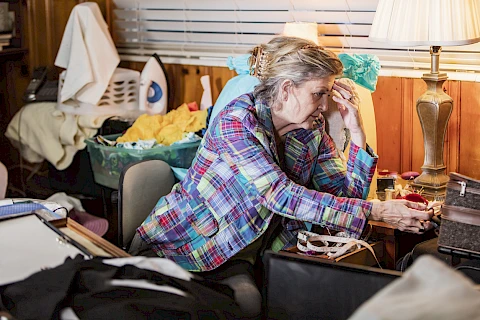
Hoarding is a serious issue that can significantly impact the well-being of seniors. It involves collecting and holding onto items, often creating dangerous living conditions. Recognizing hoarding behaviors early can make a big difference in addressing the problem and improving quality of life. We want to help caregivers identify the signs of hoarding in their senior loved ones and provide guidance on how to approach this sensitive topic.
What Is Hoarding?
Hoarding is the persistent difficulty of discarding or parting with possessions, regardless of their value. This behavior can lead to cluttered living spaces and health and safety risks. In seniors, hoarding might be caused by factors, such as grief, loneliness, or health issues such as dementia. You need to differentiate between hoarding and collecting.
Physical Indicators of Hoarding
Identifying hoarding starts with recognizing physical signs in the senior's living environment. Look for rooms filled with items to the point where their intended use becomes impossible. For instance, beds covered with piles of clothes or kitchens crowded with stacks of containers and unused food. Seniors with hoarding behaviors often struggle to get rid of items, even those that are broken, expired, or otherwise useless.
Emotional and Behavioral Signs
Hoarding involves more than just physical clutter; it also includes emotional and behavioral aspects. If a senior becomes visibly upset or anxious at the thought of throwing something away, this is a clear emotional sign of hoarding. An excessive emotional attachment to their belongings, believing each item has significant value or may be needed one day, is another red flag.
Environmental Red Flags
In addition to physical and emotional signs, it's important to be aware of various environmental indicators. Cluttered hallways, staircases, and doorways that make moving around the home difficult or unsafe are major concerns. Items piled near heat sources, candles, or electrical outlets can easily ignite and pose serious fire risks. Notice if the home appears to be falling into disrepair with broken appliances, plumbing issues, or structural damages that are being ignored.
Approaching the Topic With Sensitivity
Talking about hoarding requires a thoughtful and sensitive approach. Here are some tips for initiating the conversation. Pick a calm, private setting and a time when you and your senior loved one are relaxed and free from distractions. You should approach the topic with care. Avoid blaming or shaming, and use "I" statements (e.g., "I am worried about your safety") to express concern.
Seeking Professional Support
If hoarding behaviors persist or worsen, it may be time to seek help from professionals. Hoarding can cause significant stress, health issues, or safety hazards, and you want to get external assistance. Therapists specializing in hoarding, professional organizers, and social workers can offer valuable support and guidance.
Senior Helpers Lancaster County Supports Seniors With Hoarding Behaviors
Recognizing and addressing hoarding behaviors in seniors is essential for their health and safety. By identifying the signs early and approaching the topic with sensitivity, you can help your loved one regain control over their living space and improve their quality of life. If hoarding behaviors are identified, don't hesitate to take action. For those in Denver, Stevens, Ephrata, Akron, and Mount Joy, contact Senior Helpers Lancaster County for professional support and guidance.